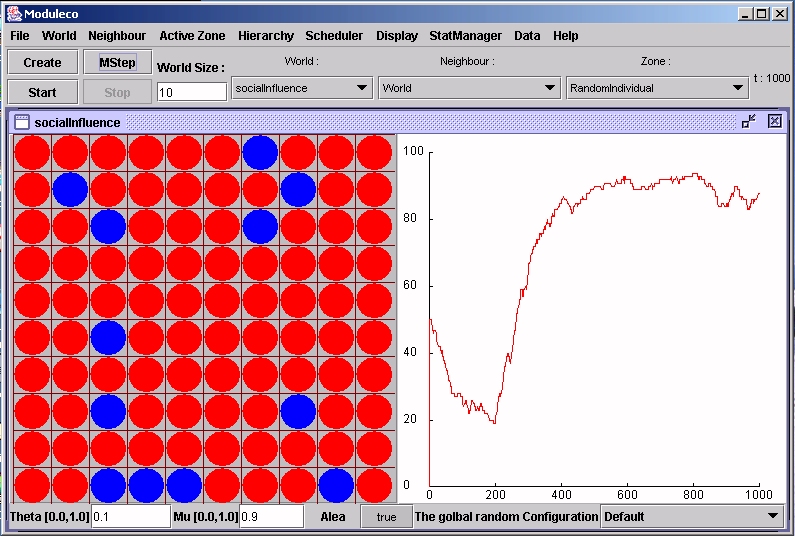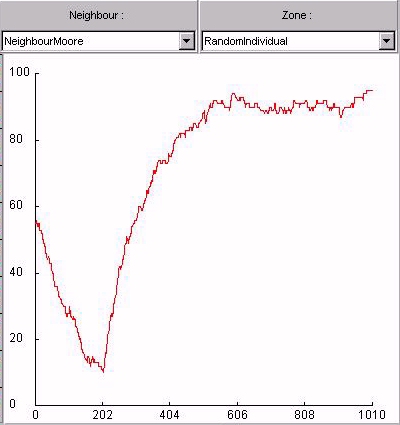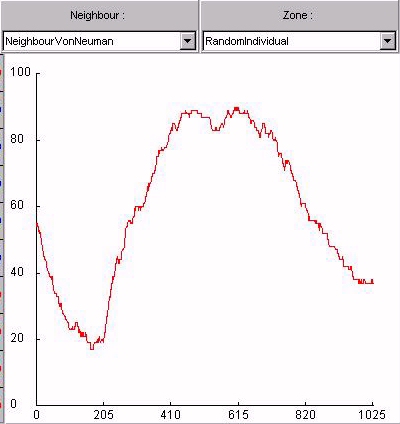
 |
Moduleco
|
The population of Agents in the world have some beliefs about the state of this world. More specifically, the world may be in two states, say {0,1}.
At time t0=0, 50% of the agents believes that this state is, say 0 (the "blue" ones); for all t>0 an agent given at random receives a private information on the state of the world and can change his opinion. The "theta" parameter gives the proportion of signals coherent with a state of the world at "1". On this simulation, theta = 0.1 for both 0 < t < 200 and for 600 < t. Between 200 < t < 600. theta turns to be 0.9.
To take their decision, agents have two information : a private one (the thetabiased-signal) and the average opinion of their neighbourhood.
When the majority rule ("social information") is in accordance with the private information, an agent don't changes his opinion. When the majority rule is not according with the private information, the agent are in a kind of "cognitive dissonance" and may change his opinion at random, according with their confidence in their private information.
Set mu as the probability of taking in account the private information only. Then, 1-mu is the probability of following the majority rule, so to be mimetic with the members of this majority. When mu = 0 only private information matters. When mu =1, agent are fully mimetics.
In the simulation below, mu = 0.1 for all agents until t=600 ; after whise, mu = 0.9 for all agents, so they became mimetics. As a result, social opinion is "lock in" in dominant opinion of state {1}, despite 90% of the private information, which suggested that we are in state {0}.
Orléan [1995] provide evidences on the existence of a bifurcation of the asymptotic invariant measure of this process which became bimodal , for smaller value of mu (strong social influence)
The following results are given for 3 neighbourhood : World (the original model) Moore and VonNeuman. In theses cases, initial distribution is the same (same seed for the pseudo-random generation), but not the exact random process, but results are quite similar for World and Moore. In the Von Neuman case, each agent have only four neighbour, so it is more easy to get outside the look-in. One can observe also the emergence of quasi-frozen zones, like in the Shelling's segregation model (and more others, on that question, see for instance Weisbuch [1989/1991])



From Orléan [1995]
Remark : in an other version available on Moduleco (following an Orléan's suggestion), Agents don't take longer their decision at random, but the world is composed of two categories of agents : the mimetic ones and the non mimetic, which follow only their own information. When the proportion of each categories of agents are fixed at random at the beginning of the simulation, previous results are preserved. But interesting results arises when this proportion is endogenous, state dependant.
Denis.Phan@enst-bretagne.fr ; Antoine Beugnard@enst-bretagne.fr